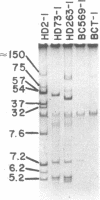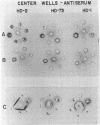Abstract
The recently discovered high-frequency transfer of plasmids between strains of Bacillus thuringiensis was used to study the genetic relationship between plasmids and production of the insecticidal delta-endotoxin crystal. Three strains of B. thuringiensis transmitted the Cry+ (crystal-producing) phenotype to Cry- (acrystalliferous) B. thuringiensis recipients. Agarose gel electrophoresis showed that one specific plasmid from each donor strain was always present in Cry+ "transcipients." The size of the transmissible crystal-coding plasmid varied with the donor strain, being 75 MDal (megadaltons) in size in HD-2, 50 MDal in HD-73, and 44 MDal in HD-263. Immunological analysis showed the Cry+ transcipients to be hybrid strains, having flagella of the recipient serotype and crystals of the donor serotype. These results demonstrate that the structural genes for the delta-endotoxin are plasmid borne. Crystal-coding plasmids also transferred into two strains of the related species Bacillus cereus and yielded transcipients that produced crystals of the same antigenicity as the donor strain.
Full text
PDF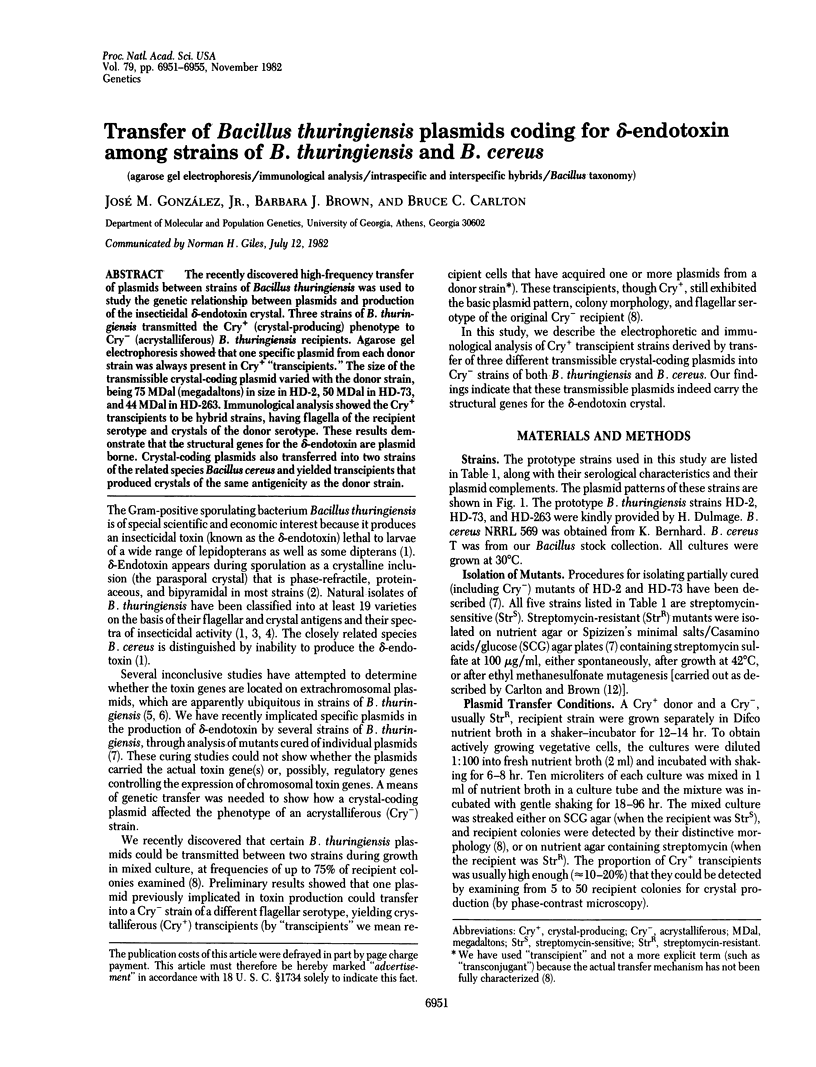
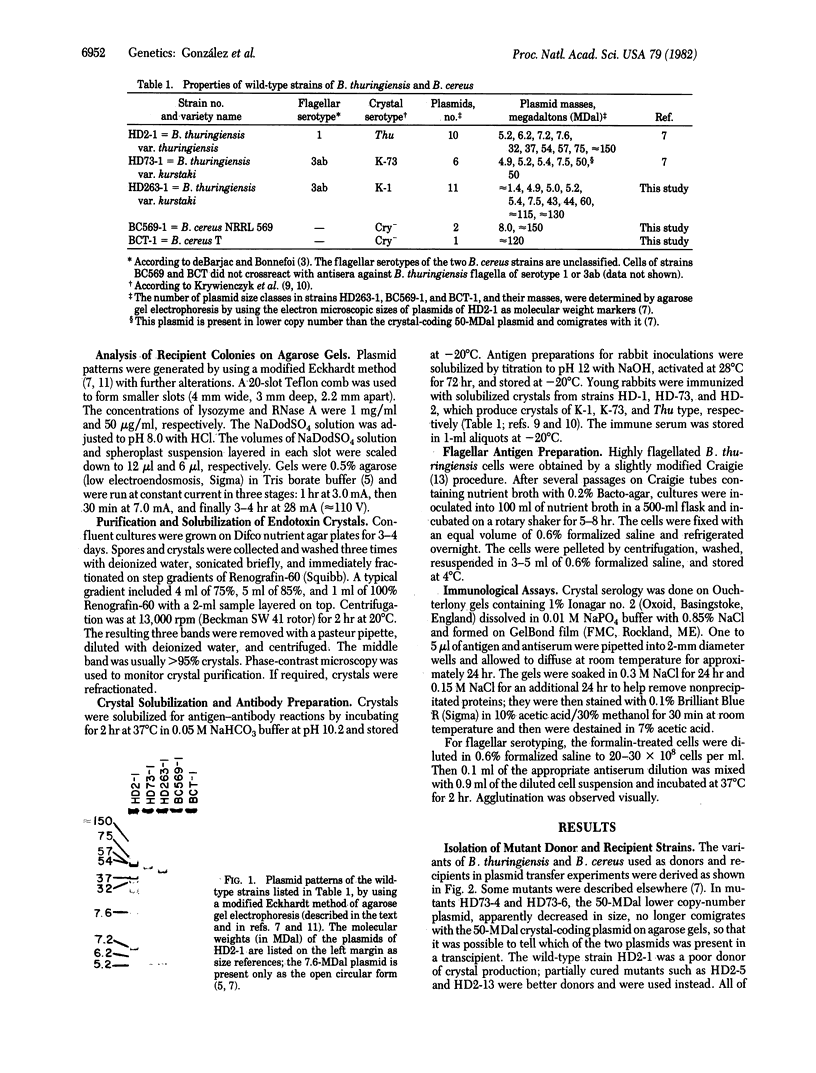
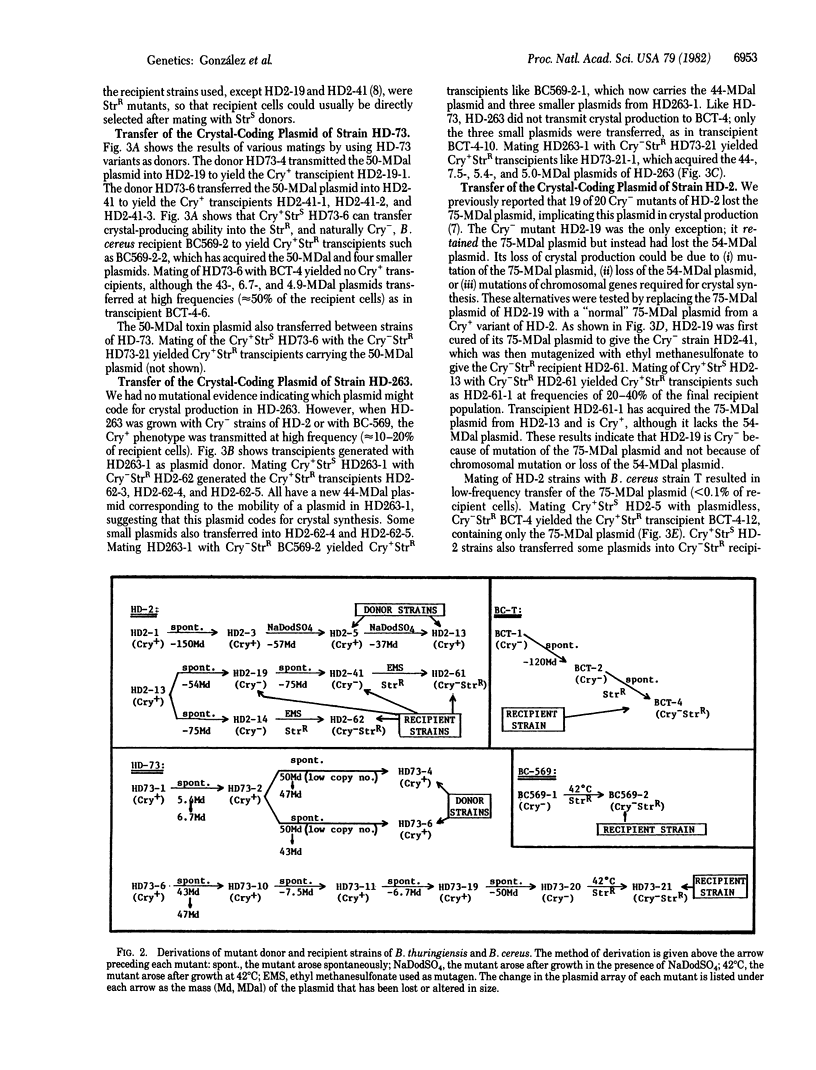
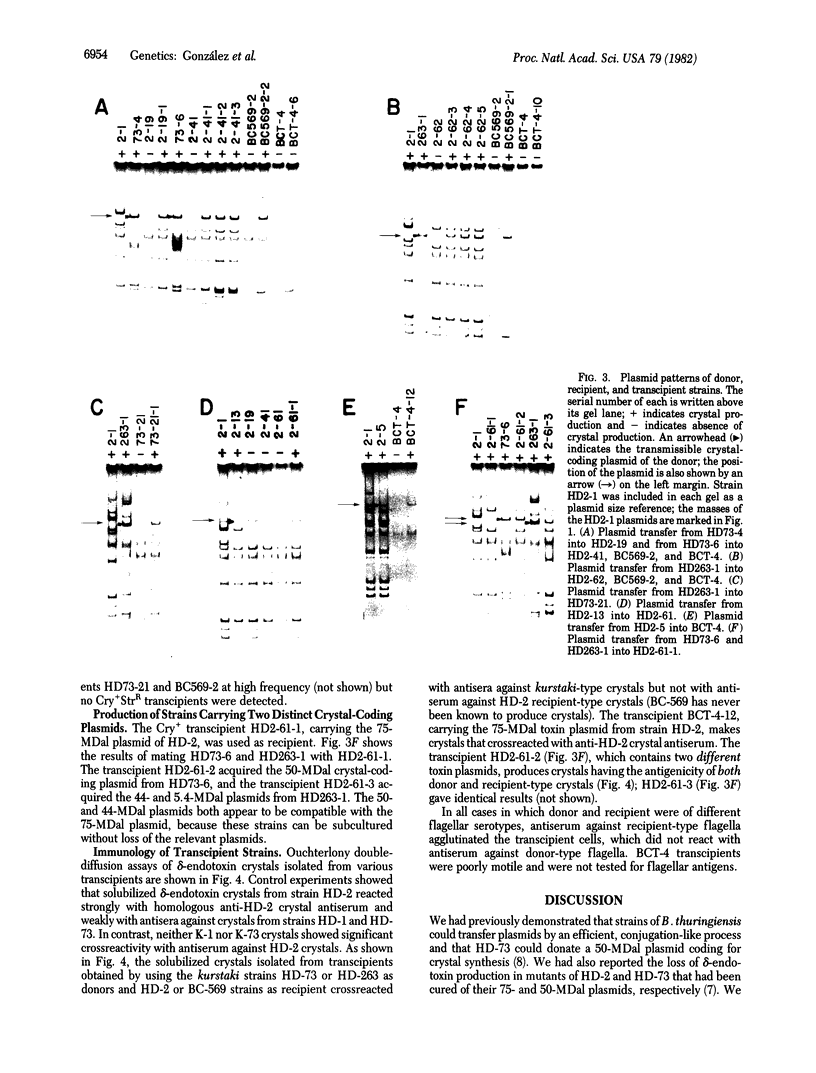
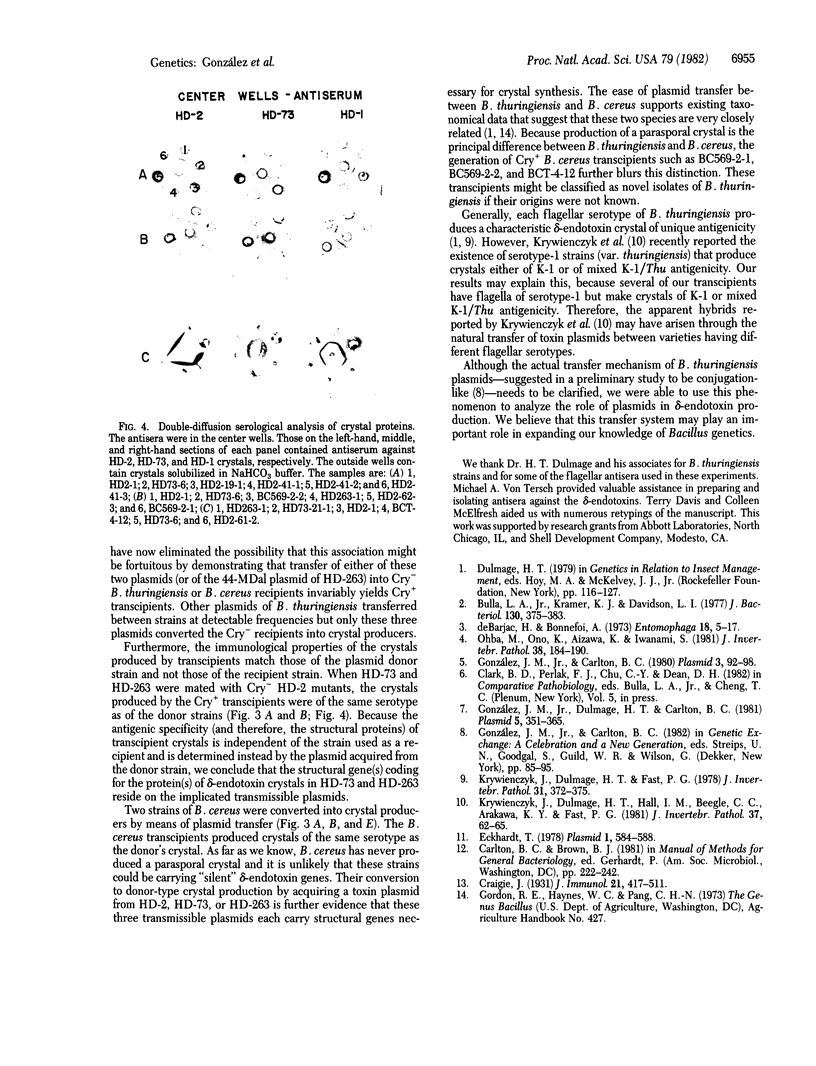
Images in this article
Selected References
These references are in PubMed. This may not be the complete list of references from this article.
- Bulla L. A., Jr, Kramer K. J., Davidson L. I. Characterization of the entomocidal parasporal crystal of Bacillus thuringiensis. J Bacteriol. 1977 Apr;130(1):375–383. doi: 10.1128/jb.130.1.375-383.1977. [DOI] [PMC free article] [PubMed] [Google Scholar]
- Eckhardt T. A rapid method for the identification of plasmid desoxyribonucleic acid in bacteria. Plasmid. 1978 Sep;1(4):584–588. doi: 10.1016/0147-619x(78)90016-1. [DOI] [PubMed] [Google Scholar]
- González J. M., Jr, Carlton B. C. Patterns of plasmid DNA in crystalliferous and acrystalliferous strains of Bacillus thuringiensis. Plasmid. 1980 Jan;3(1):92–98. doi: 10.1016/s0147-619x(80)90038-4. [DOI] [PubMed] [Google Scholar]
- González J. M., Jr, Dulmage H. T., Carlton B. C. Correlation between specific plasmids and delta-endotoxin production in Bacillus thuringiensis. Plasmid. 1981 May;5(3):352–365. doi: 10.1016/0147-619x(81)90010-x. [DOI] [PubMed] [Google Scholar]
- Krywienczyk J., Dulmage H. T., Fast P. G. Occurrence of two serologically distinct groups within Bacillus thuringiensis serotype 3 ab var. kurstaki. J Invertebr Pathol. 1978 May;31(3):372–375. doi: 10.1016/0022-2011(78)90232-x. [DOI] [PubMed] [Google Scholar]



